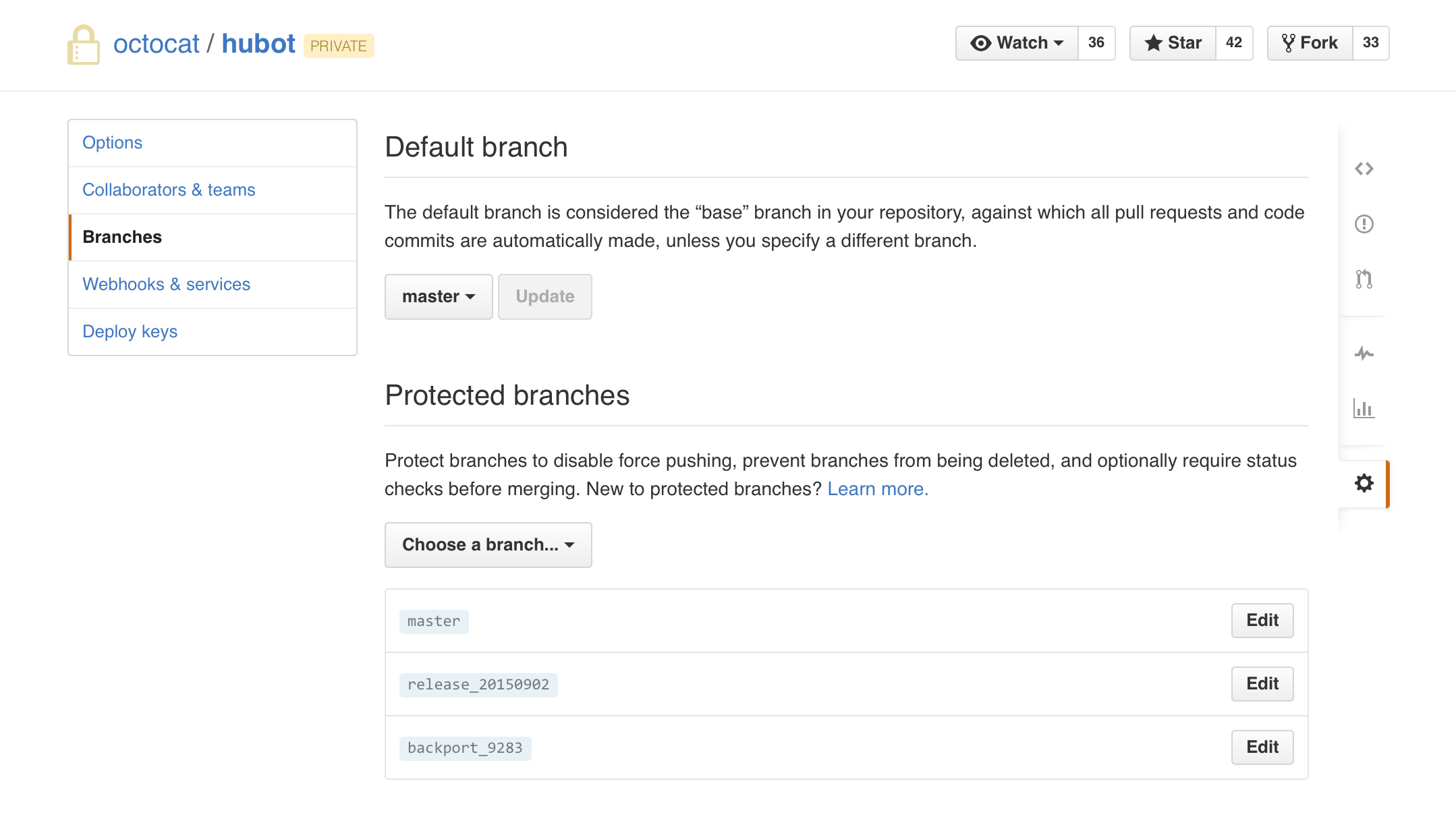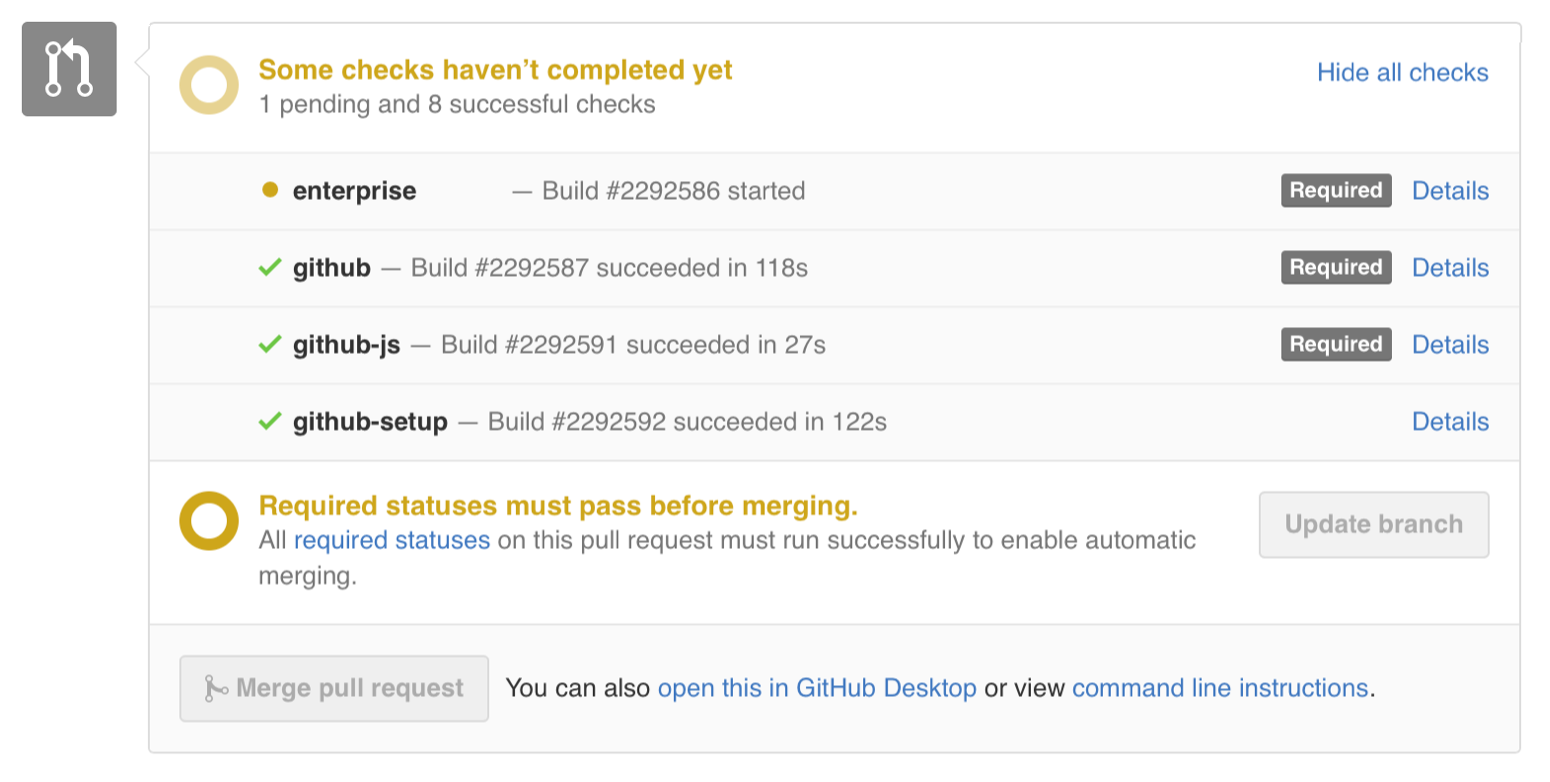Protected branches and required status checks
It’s all too easy to force push to the wrong branch, overwriting someone else’s changes with your own. Sometimes it results in losing work (unless you know how to undo…
It’s all too easy to force push to the wrong branch, overwriting someone else’s changes with your own. Sometimes it results in losing work (unless you know how to undo almost anything in Git).
Over the next few weeks we’ll be rolling out a new feature called Protected Branches which gives repository administrators the ability to disable force pushes to specific branches. When it’s enabled for your repositories you’ll be able to go to the Branches tab in repository settings and protect branches:

In addition to blocking force pushes, a protected branch can have required status checks. Required status checks make integrations that use our Status API enforceable and you can disable the merge button until they pass:

When using required status checks, your branch must be up-to-date to ensure your tests will pass after merging. The new “Update branch” button lets you merge the latest changes from the base branch of the Pull Request with one click.

Written by
Related posts

The future of AI-powered software optimization (and how it can help your team)
We envision the future of AI-enabled tooling to look like near-effortless engineering for sustainability. We call it Continuous Efficiency.

Let’s talk about GitHub Actions
A look at how we rebuilt GitHub Actions’ core architecture and shipped long-requested upgrades to improve performance, workflow flexibility, reliability, and everyday developer experience.

GitHub Availability Report: November 2025
In November, we experienced three incidents that resulted in degraded performance across GitHub services.